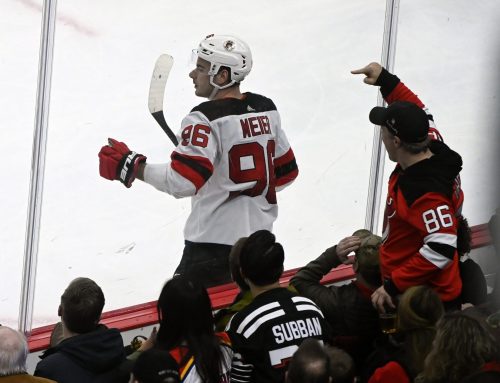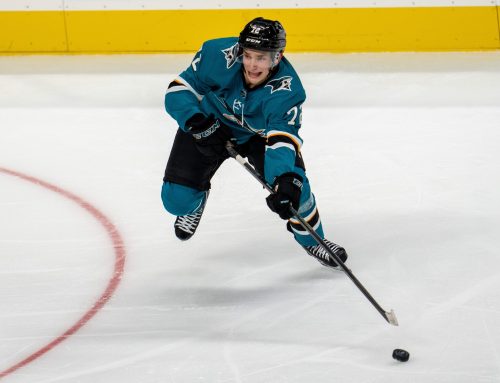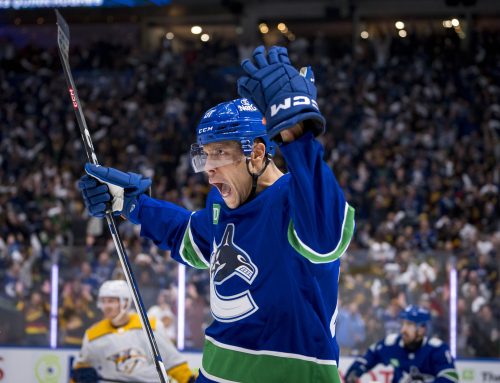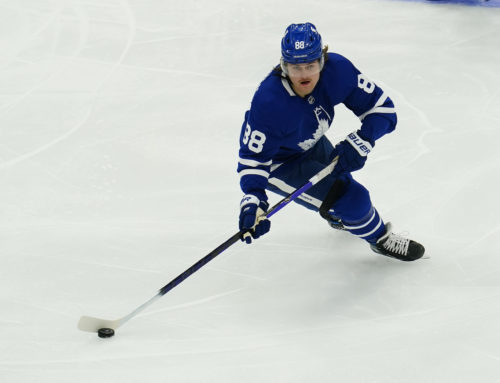Ramblings: Players with down years
Michael Clifford
2020-03-31
Every year, some players don't perform to expectations. It's just the nature of sport; sometimes players will exceed their talent levels, and some will underperform them. It's not a straight shot for everyone with regards to explanations, though. It's not as if we can just point to a number and exclaim that is the problem. There is often a confluence of events that might seem like small issues, but when assembled together make it seem like a Megazord of disappointment.
Here are some players having down years relative to what we expected, why they're having down years, and why it could bode well at the draft table for next season. Data from Natural Stat Trick.
Marchessault had a fantastic first year with Vegas, posting 27 goals and 75 points in 77 games. He followed that up with a stellar, but less impressive 2018-19, posting 25 goals and 59 points in 82 games. That represented a downturn, and that downturn maintained in 2019-20 with 22 goals and 47 points in 66 games. So, what's going on here?
First, the secondary assist rate was abysmal, as he was tied for the eighth-worst mark in the league this year among forwards at 5-on-5 (that's out of 249 forwards with at least 700 minutes). Over his previous three seasons, his lowest secondary assist rate at 5-on-5 was 0.3 per 60 minutes; it sits at 0.13 this year. In aggregate, his previous three seasons saw a secondary assist rate of 0.46 per 60. In other words, his rate this year is less than one-third of his three-year average. We could easily add 5-6 points to his current total, giving him a 65-point pace.
The team was also shooting 7.1 percent with him on the ice at 5-on-5, the lowest for him since leaving Tampa Bay in 2016. It might not seem like a lot, but if the team were to shoot nine percent with him on the ice (about the middle of his range over the previous three seasons), he's on the ice for 10 more goals at 5-on-5, and at his IPP, that would include about seven more points.
Then there's the shooting percentage, which is under 10 percent for the second year in a row. I believe he has more in him than shooting nine percent individually every season, but maybe he doesn't. That's just my guess.
If everything looked normally for Marchessault this year under the hood, we'd expect him to be somewhere near a 65- to 70-point range, rather than the 55-60 points he may have accumulated this year. With his ability to contribute in peripherals, he's a strong rebound candidate, and will be going later in drafts next year than he did in September 2019. I'll be a buyer.
Jack Hughes
Undoubtedly, it was a disaster first year for Hughes. There were high expectations for him this season and 21 points in 61 games isn't exactly living up to high expectations. The team around him had something to do with it, obviously, but there are reasons to hope for next year.
I'll get my first issue with Hughes next year out of the way, though: I'm not convinced he's the top-line centre for 2020-21. And if he's not getting top line minutes (and the line mates that go with it), I'm not sure how much raw upside there is; it's hard to see 70-point seasons playing with Miles Wood, Jesper Boqvist, Jesper Bratt, and the like. There are good real-world players on the roster, but with Taylor Hall gone, Kyle Palmieri is the only proven winger. We can probably throw Nikita Gusev into the mix as well, but I'm less certain about his upside, and there's no guarantee he's even on the roster for next season. In that sense, I'm very worried about Hughes' quality of teammate.
Beyond that, though, there is a lot of improvement to come from his underlying numbers. Like Marchessault, Hughes had just two secondary assists at 5-on-5 all year. If he's the talented centre we believe him to be – and he is – then there's no way that repeats next year in a full season.
There's also his shooting percentage, as of the 249 forwards in our sample, he is last in 5-on-5 shooting percentage (2.4 percent). I feel similarly confident that he won't repeat two goals at 5-on-5 again in a full season for the foreseeable future.
There's no solid figure to dispense at the moment, but even a relatively normal secondary assist rate and 5-on-5 shooting percentage would add maybe four goals and six assists to his current point total, increasing it by nearly 50 percent. He'd still just be on pace for a 40-ish-point season, but that's not so bad when considering an 18-year old rookie playing on a potential lottery team.
Teammate quality is the concern, and that's going to keep his projections tempered for the near-term.
It feels like for every good Montreal forward over the last five years, the refrain has been the same: what if the power play was actually good? This year, they're 27th in power-play goals scored. They were 31st last year, 15th in 2017-18, and 19th the year before. In fact, the last time the Habs were top-10 in the league in power play goals was the 2013 lockout season. That's an incredible run of ineptitude.
Anyway, it's not as if Domi's point decline is due to PPPs. He had 11 in 2019-20, and also had 11 last year when he posted 72 points. The point here is that if even strength scoring rates drop off, power-play production can help keep the point total afloat, and can make for a great fantasy season as PPPs are often their own individual category. That didn't happen with Domi, obviously, and that's why he was probably going to fall 20 points short of his mark from last year, rather than 15, or 10.
Something interesting I found out about Domi: his scoring rates on the power play are atrocious. His first three years in Arizona saw PP shooting percentages of 6.8 percent, 5.9 percent, and 2.8 percent. That would be abysmal for 5-on-5 shooting, let alone on the power play. He saw a big uptick in his first year with Montreal to 11.8 percent, before crashing down to 3.9 percent this season. Could just be a weird confluence of events? Those Arizona teams were atrocious offensively, and it's already been explained how bad the Montreal power play has been for years now. It would probably only add a couple goals anyway.
His Individual Points Percentage (IPP), or the rate at which he tallies a point with a Habs goal scored while he's on the ice, was a career-low 58.7 percent in 2019-20. He was at 79.1 percent in 2018-19, and his first two seasons in Arizona saw rates north of 71 percent. Even an IPP of 70 percent this year would add five points to his current total. So, we add a couple PP goals and maybe five points at even strength, all of a sudden he's on pace to crack 60 points again. It really is a fine line between fantasy irrelevance and fantasy utility.
The final problem is ice time. Their top-9 forwards were all within 2:30 of each other at 5-on-5, and of all Habs forwards, no player was in the 80th percentile league-wide in 5-on-5 ice time per game. The ice time is spread around, which means Domi magically getting to 19-20 minutes a night is a pipe dream.
Things like PP production and ice time increases can offset a down year, but that's not going to happen in Montreal. We cannot rely on much more than 17 minutes a game and 15 PPPs for Domi, meaning no matter how talented he might be individually, repeating 70-point seasons is going to be extremely difficult.
I just wanted to briefly mention Lindholm because I think after the seasons he and Johnny Gaudreau had in 2018-19, a lot of people were hoping for more of the same. Well, I was at least. That certainly didn't come to fruition. The thing is, his entire drop is from his assists, where he fell from 51 in 2018-19 to 25 in 2019-20. He probably would have lost 10 assists alone to a regression in secondary assists, and that's a big portion of his overall drop.
That ties into the underperformance of his line mates, as Sean Monahan had averaged over 30 goals over the prior two seasons but was going to struggle for 25 this year. Gaudreau also saw his goal total literally halved (36 to 18) over the last year. There aren't enough goals missing from his line to completely make up the drop in secondary assist rate, but it's certainly short-changing him quite a bit.
The conundrum here isn't whether his teammates bounce back – I believe they do – but to what level the bounce back affects Lindholm, who was due for secondary assist regression anyway. I think it's reasonable to expect a 60-point season from Lindholm, but expecting 75-80 points again is asking too much.





 TOR
TOR BOS
BOS DAL
DAL VGK
VGK EDM
EDM L.A
L.A COL
COL FLA
FLA T.B
T.B VAN
VAN WPG
WPG NYR
NYR CAR
CAR
